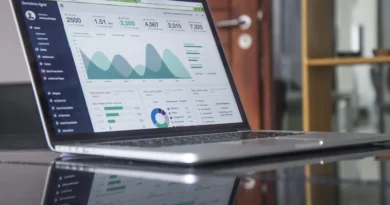How to Use Git and GitHub for Collaborative Development
Git is a version control system that allows developers to track changes to their codebase and collaborate with other team members. GitHub is a popular platform that provides hosting for Git repositories, as well as tools for issue tracking, project management, and more. In this article, we’ll walk through the basics of using Git and GitHub for collaborative development.
Getting Started with Git
Before you can use Git, you’ll need to install it on your computer. You can download the latest version from the Git website (https://git-scm.com/downloads). Once Git is installed, you’ll need to configure it with your user name and email address. This is important because Git will use this information to identify the person who made each change to the code.
To set your user name and email address, open a terminal or command prompt and enter the following commands:
Copy codegit config --global user.name "Your Name"
git config --global user.email "your@email.com"
Creating a Git Repository
To use Git, you’ll need to create a repository. A repository is a collection of files that are tracked by Git. To create a new repository, navigate to the directory where you want to store your code and enter the following command:
Copy codegit init
This will create a new Git repository in the current directory. You can now add files to the repository and track changes to those files using Git.
Making Changes and Committing Them
To make changes to a file in your repository, simply edit the file as you normally would. Once you’re finished making changes, you’ll need to commit those changes to the repository. A commit is a snapshot of your code at a specific point in time. It’s a way of marking progress and saving your changes.
To commit your changes, use the following command:
Copy codegit commit -a -m "Commit message"
The -a flag tells Git to commit all changes to tracked files. The -m flag is followed by a message that describes the changes made in the commit. This message is important because it helps you and other team members understand what was changed and why.
Collaborating with GitHub
GitHub is a platform that provides hosting for Git repositories, as well as tools for issue tracking, project management, and more. It’s a great place to collaborate with other developers on a project.
To use GitHub for collaborative development, you’ll need to create a GitHub account and set up a repository on the platform. Once you’ve done this, you can push your local repository to GitHub using the following command:
Copy codegit push origin master
This will push your local repository to the master branch on GitHub. Other team members can then clone the repository to their own computers and make changes.
Collaborating with Git and GitHub
When working with a team, it’s important to keep your repository up to date with the latest changes made by other team members. To do this, you’ll need to pull the latest changes from the repository.
To pull the latest changes, use the following command:
Copy codegit pull
This will download any new commits from the repository and merge them into your local codebase.
Conclusion
Git and GitHub are powerful tools for collaborative development. By using Git to track changes to your code and GitHub to collaborate with other team members, you can work efficiently and effectively on your project.




